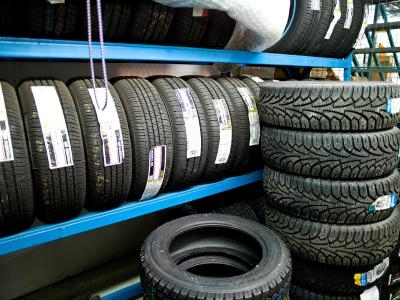
Camber, caster and toe in concern the angle or inclination of an automobile wheel as it relates to its position on the ground, while attached to the alignment suspension parts. The three axes have specific angled measurements that are required by manufactures to keep the wheel flat on the ground and tracking true for the best performance. Knowing the difference between each angle and how it affects steering, will help a driver to know if his vehicle tracks straight and that his tires are wearing properly.
Toe in involves the measurement between the front end and the rear end of the tires. It is expressed in fractions of an inch, with the tire facing either inward or outward, as viewed from the front of the vehicle. Tires that point inward have a negative measurement, and a positive measurement if facing outward. Most factory settings on toe in alignment call for a "zero" setting, meaning that the wheels face dead ahead. Incorrect toe setting can allow the vehicle to pull or drift to one side, while the steering wheel is held steady on a flat, even road. Incorrect toe-in setting can also cause uneven tire wear.
Caster is an imaginary line drawn through the vertical axis of the wheel, as it is attached to the suspension components, viewed from the side of the vehicle. When the steering wheel is turned, the front wheels turn on a pivot, which represents the angle of the pivot. Caster is measured in degrees. If the top of the pivot point leans toward the rear of the vehicle, it has positive caster. If the top of the pivot point points toward the front of the vehicle, it has negative caster. Caster involves tracking, and if one wheel leans positive or negative off specifications, it causes the vehicle to pull to the left or right.
Camber, also measured in degrees, represents the angular tilt of the wheel when seen from the front of the vehicle. If the top of the wheel leans out from center, the measurement indicates a positive position. If the wheel leans inward toward the engine, it has negative camber. Too much negative or positive camber keeps the wheel from sitting perpendicular on the ground, and this causes tire wear on the inside or outside leading edge of the wheel.
All angle measurements must be taken into consideration during the alignment phase of a vehicle. A technician sets the proper adjustments for camber, caster and toe in, according to the specific measurements outlined by the manufacturer's recommendation. The purpose involves setting the front wheels, including the rear wheels in some cases, so the tires make full contact on the road's surface and track down the road straight, with the least amount of friction. Any measurement that remains contrary to manufacturer's settings, will allow the tire tread to wear unnaturally, or cause the vehicle to pull or drift to the left or right.